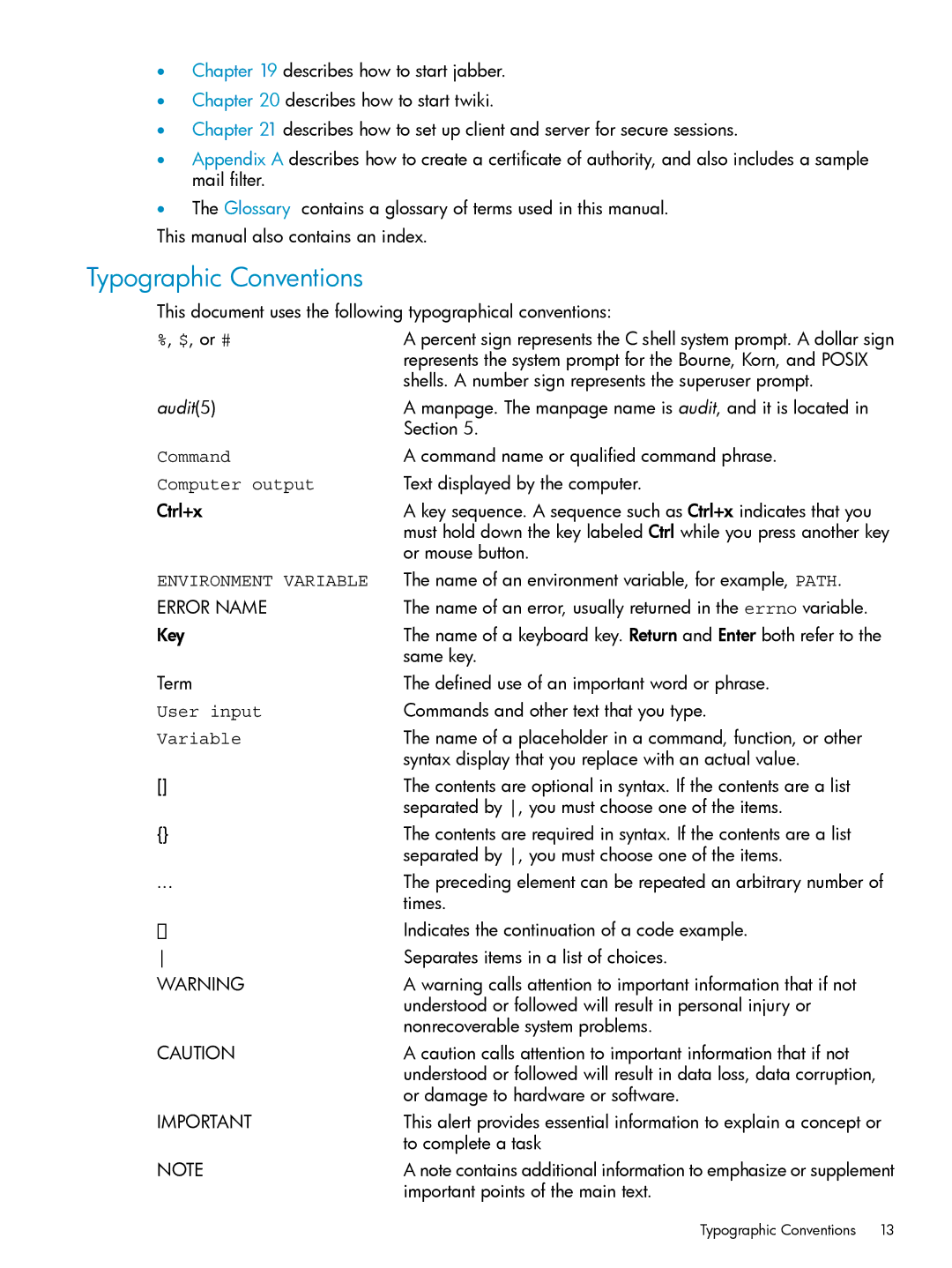•Chapter 19 describes how to start jabber.
•Chapter 20 describes how to start twiki.
•Chapter 21 describes how to set up client and server for secure sessions.
•Appendix A describes how to create a certificate of authority, and also includes a sample mail filter.
•The Glossary contains a glossary of terms used in this manual.
This manual also contains an index.
Typographic Conventions
This document uses the following typographical conventions:
%, $, or # | A percent sign represents the C shell system prompt. A dollar sign |
| represents the system prompt for the Bourne, Korn, and POSIX |
| shells. A number sign represents the superuser prompt. |
audit(5) | A manpage. The manpage name is audit, and it is located in |
| Section 5. |
Command | A command name or qualified command phrase. |
Computer output | Text displayed by the computer. |
Ctrl+x | A key sequence. A sequence such as Ctrl+x indicates that you |
| must hold down the key labeled Ctrl while you press another key |
| or mouse button. |
ENVIRONMENT VARIABLE | The name of an environment variable, for example, PATH. |
ERROR NAME | The name of an error, usually returned in the errno variable. |
Key | The name of a keyboard key. Return and Enter both refer to the |
| same key. |
Term | The defined use of an important word or phrase. |
User input | Commands and other text that you type. |
Variable | The name of a placeholder in a command, function, or other |
| syntax display that you replace with an actual value. |
[] | The contents are optional in syntax. If the contents are a list |
| separated by , you must choose one of the items. |
{} | The contents are required in syntax. If the contents are a list |
| separated by , you must choose one of the items. |
... | The preceding element can be repeated an arbitrary number of |
| times. |
| Indicates the continuation of a code example. |
Separates items in a list of choices. | |
WARNING | A warning calls attention to important information that if not |
| understood or followed will result in personal injury or |
| nonrecoverable system problems. |
CAUTION | A caution calls attention to important information that if not |
| understood or followed will result in data loss, data corruption, |
| or damage to hardware or software. |
IMPORTANT | This alert provides essential information to explain a concept or |
| to complete a task |
NOTE | A note contains additional information to emphasize or supplement |
| important points of the main text. |
Typographic Conventions | 13 |
